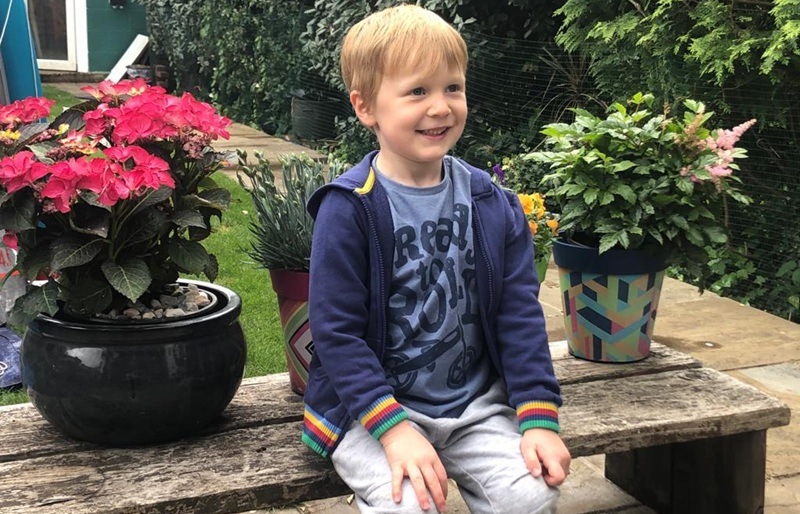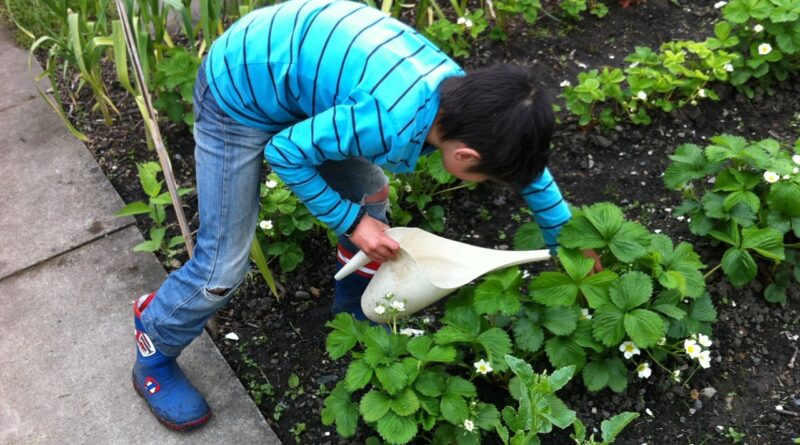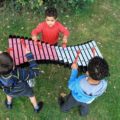Gardening time: Get your kids growing!
Spending time outdoors gives children a sense of freedom, curiosity and independence that can’t always be matched indoors. Gardens offer a quiet, familiar space where children can explore at their own pace, free from the pressure of schedules or structured activities. With a little guidance, even a small outdoor area can become a space for discovery.
Children don’t need far-flung adventures to build a connection with the natural world. They need access, time, and a little encouragement. A garden holds more learning potential than many realise. Plants, insects, soil, and changing weather patterns all become part of the experience. The more time children spend outdoors, the more likely they notice the details. That attention to detail often leads to better understanding, deeper focus, and a growing sense of responsibility.
Let’s look at a few ways to help your child connect with nature – right outside the back door.
Let Them Take the Lead
Children are naturally curious, but sometimes adults shape the experience too early. Instead of planning the activity from start to finish, give your child some freedom to explore. Watch what catches their interest. Some will dig for worms. Others will pick up leaves or sit quietly and listen to birds.
It helps to keep the space safe and manageable without turning it into a classroom. A corner of the garden with a few logs, rocks, or potted plants can turn into an entire day’s worth of interest. Avoid the urge to constantly explain or direct. Instead, ask questions like, “What do you think that is?” or “Why do you think that leaf looks different?” Their answers might surprise you—and they’ll start asking their own questions, too.
Create a Garden Space They Can Care For
Giving children a part of the garden to look after is a simple way to build confidence. Whether it’s a raised bed, a set of pots, or a row along the fence, they’ll learn from success and failure. Let them choose the plants where possible. Fast growers like radishes or sunflowers often hold their interest.
Be ready to talk about what happens when a plant doesn’t grow as expected. Weather, pests, and overwatering are all part of the learning curve. It’s not about perfection. It’s about the process, and children take pride in being trusted to manage something on their own. They’re more likely to stay involved if they feel ownership.
Add Simple Structures to Support Outdoor Learning
Not all gardens have space for large vegetable beds or wildflower areas. But even a modest garden can benefit from thoughtful additions that support outdoor learning. Storage benches, rain gauges, bug hotels, and cold frames give children practical tools to observe and experiment.
Sheltered growing areas can also help extend children’s time outdoors through different seasons. This is where lean-to greenhouses offer a practical solution. These structures take up less space and fit neatly against a wall or shed, making them a smart option for smaller gardens. They also give children a chance to grow more delicate plants or start seeds earlier in the year, turning gardening into an activity that lasts beyond the summer. Lean-to greenhouses can double as learning hubs. Children can track plant growth, test soil moisture, and keep a weather log – all from within a protected space that still feels part of the outdoors.
Bring Nature Closer to the Senses
Hands-on learning is one of the best ways for children to absorb new information. A garden is filled with sensory opportunities – textures, smells, sounds, and colours that change with the seasons. Encouraging children to notice these differences helps sharpen their awareness and understanding.
Try planting herbs such as mint, lavender, or rosemary. These are easy to grow and have strong scents that children tend to remember. Encourage gentle handling so they can feel the texture of the leaves and smell the oils on their fingers. Over time, they’ll start to associate different plants with particular scents and uses.

Use the Seasons as a Teaching Tool
Gardens change month by month, which means your child’s learning environment constantly evolves. This makes it easier to keep their interest without having to buy new toys or supplies. One week, they’re collecting fallen leaves; the next, they’re watering seedlings.
Spring and summer usually offer more obvious activities, but autumn and winter have their place too. In colder months, children can still help with planning, clearing leaves, observing birds, and checking which plants survive the frost. This encourages long-term thinking and helps build a deeper appreciation for natural cycles.
Keep a notebook or wall calendar where your child can jot down what they see. Over time, patterns will start to appear. Buds arrive earlier, some years. Certain insects show up in groups. These small details form the basis for understanding weather, growth, and climate variation.
Keep the Focus on Experience, Not Outcome
Parents often feel pressure to create meaningful learning moments. But outdoor learning works best when it’s flexible and child-led. That means letting go of the need to tick boxes or produce perfect results. If your child spends 20 minutes watching ants carry food across a stone, that’s valid learning.
Activities don’t always need to be structured or labelled as educational. Some days, your child may plant seeds with care and attention. On other days, they might just want to dig and explore. Both are fine. The point is to keep the space open for discovery.
Make It a Shared Experience—Sometimes
While independent play is valuable, sharing the space occasionally can encourage stronger bonds and deeper conversations. You don’t need to guide every activity, but being nearby or joining in now and then shows interest and support. It also gives you a chance to answer questions or talk through what they’re observing.
Simple tasks like watering, harvesting, or preparing food from the garden offer natural moments to talk. You can also work alongside each other on small projects, like building a birdhouse or planting a new section of the garden. These shared moments often stick with children long after the activity ends.
Use Tools and Resources Thoughtfully
You don’t need a lot of equipment to support outdoor learning, but a few simple tools can make a difference. Child-sized trowels, gloves, and watering cans allow them to work safely and independently. Small magnifying glasses or clear jars can help them look more closely at insects, soil, or seeds.
Technology has a place, too, if used well. Apps that identify plants or birds can encourage observation and support curiosity. Try using these together to answer your child’s questions in real-time. It can also help reinforce what they’re learning from direct contact with nature.
Keep the focus on real experience rather than screens. The goal isn’t to turn your garden into a project. It’s to make it part of your child’s routine, something they can return to throughout the week in different ways.
Ready to Turn Your Garden into a Learning Space?
Helping your children connect with nature doesn’t require extra time, a large space, or a perfect plan. Small, regular moments outdoors often make the most impact. A garden – no matter the size – can offer freedom, responsibility, and a chance to explore the living world in a way that feels personal and real.
When gardens are set up with care, they grow more than just plants. They support focus, patience, curiosity, and independence. Through growing food, watching insects, or caring for their own space, children come away with stronger habits and better understanding. And those lessons last.







